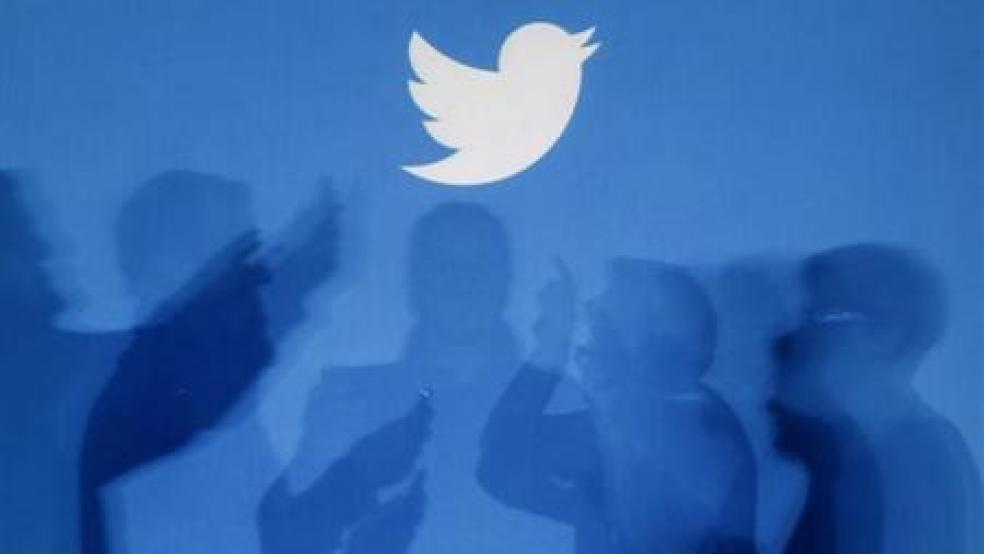Twitter is a champion of free speech — its former UK general manager once described the social network as "the free speech wing of the free speech party" — and it has only very recently started removing extreme violent content, and cracking down on abuse on its network.
Porn is still prevalent on Twitter, however, and that is a problem for advertisers.
Nielsen, the television and digital measurement company, was forced to halt one of its paid-for Promoted Tweets campaigns this week after its ads were served against profile pages dedicated to pornography, according to Adweek.
The Nielsen paid-for tweet, reading "Am I getting the most value from my media buy? Learn what other questions you should ask in our webinar recording," appeared on the "Homemade Porn" and "Daily Dick Pictures" profile pages, Adweek reports. The trade magazine says ads from other brands including Duane Reade, NBCUniversal, and Gatorade also showed up in feeds next to pornographic images and videos. The problem appears to be tied to a new ad format "Suggested by Twitter," which only first rolled out in March.
A source told Adweek that a bug was to blame. Twitter's technology usually ensures ads do not appear against obscene content, but it failed in this instance, and Nielsen suspended its campaign.
Related: LinkedIn follows Twitter, shocks social media investors
A Twitter spokeswoman sent Business Insider this statement: "We're aware that Promoted Tweets are being displayed on some profiles that contain inappropriate content. We are committed to providing a safe environment for brands to build their business and our product team is working to fix the issue."
A bug might be a one-off, but there's a bigger issue
A Channel 4 News investigation in February found that one in every thousand tweets is pornographic.
Robert Peck, an analyst at SunTrust Robinson Humphrey, estimated in a report published last week that at least 10 million Twitter accounts were dedicated to tweeting pornography, Adweek reported. Peck added that if Twitter did not start doing a better job blocking them, clients would pull back on spending.
Related: Twitter's growth seen hinging on luring advertisers
Twitter doesn't need another ad revenue setback: Its first-quarter revenue fell below its own forecast and analysts' expectations — $436 million versus analysts' estimates of $456.8 million — and its second-quarter guidance of $470 million to $485 million fell well below the $538.2 million expected by analysts.
Stuart McLennan, head of paid social media at the digital marketing agency iProspect, told Business Insider clients had been asking about the possibility of ads accidentally appearing next to porn.
Ads on Twitter are targeted based on a user's interests, location, accounts followed, and so on — not the specific content they are viewing at any one time. That means there is always the chance a paid-for ad can appear next to porn, which can be turned into the kind of headlines that worry advertisers. Twitter does block some keywords that brands would not want to appear against, McLennan said, but it appears some slipped through the net in the case of Nielsen.
He added: "Twitter does have a lot of these types of [pornographic] accounts, and people are interested in that type of content. Whether that would stop me recommending Twitter to a client? I'm not sure. Twitter is a very distinctive place: the conversations you can have, and the real-time nature of the platform, if clients require it."
Related: Tweets Seem to Bring Out the Worst in Some Lawmakers
The issue of brand safety isn't limited to Twitter. It has long plagued the digital advertising industry. While automated technologies mean the buying of online ads has become more efficient, it can often mean ads are served next to distasteful content. Last month, for example, The Sun reported that ads for big brands in the UK including the wireless carrier O2, British Gas, and Marks & Spencer had appeared on pedophilia and incest websites.
Adriana Matyaskova, UK head of display media at the global marketing and technology agency DigitasLBi, says the problem is trickier to tackle on social media than the rest of the web.
She told Business Insider: "Brand safety in digital media has been a hot topic for some time now. The industry bodies and tech providers have made some great progress in tackling the issue, however the risk of ads appearing next to inappropriate content," which also includes instances of racism, religious extremism, and bullying, Matyaskova later added, "can still be fairly high on social platforms due to its real-time user-generated nature.
"The current challenge for agencies is the inability to use existing third-party verification technology across social platforms in the way that we're used to doing in display media."
But Ryan Kangisser, partner for the digital division at the global media advisory firm MediaSense, told Business Insider that the advertising industry — companies like Twitter, ad tech companies, and agencies — needed to take more responsibility and be more proactive through manual as well as automated means to stop these issues from escalating.
"The default position has been to develop site blacklists and occasionally use software to block potentially dubious environments," Kangisser added, "but these rather passive attempts need to go further to ensure brands can sleep safe at night knowing they will not be a headline the following day ... Time to admit the internet has a problem rather than assuming technology will simply make it go away."
This article originally appeared on Business Insider.
Read more from Busiess Insider:
Zynga is Cutting 18% of its staff
SolarCity says 'No thanks!' to Tesla's new battery
6 things the US stole from the Nazis during WWII




